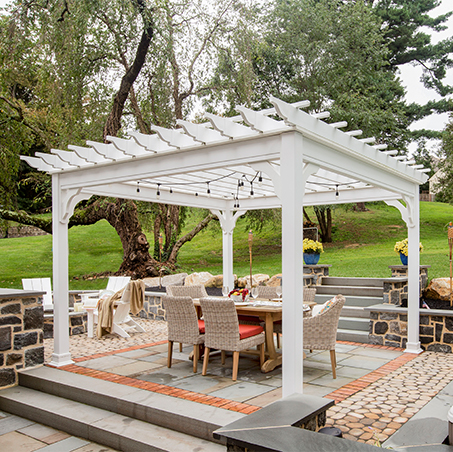Pergola, veranda, and gazebo are outdoor structures that serve various purposes and have distinct features. Here are the main differences between them:
- Pergola:
- Structure: A pergola is a framework covered with trained climbing or trailing plants. It typically consists of vertical posts or pillars that support cross-beams and a durable open lattice, often left uncovered.
- Function: Pergolas are designed to create a defined space outdoors, providing a partial shelter, often used for walkways, passageways, or as a sitting area with vertical posts or pillars supporting an open lattice.
- Veranda:
- Structure: A veranda is a roofed, open-air gallery or porch, usually attached to the exterior of a building. It is typically a long, open space with a roof, sometimes partially enclosed by a railing or balustrade.
- Function: Verandas are designed as extended living spaces that provide shade and shelter. They often serve as a transition space between the interior and exterior of a building, providing a comfortable area for relaxation or entertainment.
- Gazebo:
- Structure: A gazebo is a freestanding, open-sided structure, often hexagonal or octagonal in shape, with a roof. It is supported by columns, pillars, or posts, and may or may not have walls.
- Function: Gazebos are standalone structures typically placed in gardens, parks, or other outdoor spaces. They are used as focal points, providing a sheltered space for people to enjoy the surrounding views or as a central gathering point.
In summary, a pergola is an open framework covered with climbing plants, a veranda is a roofed open-air space attached to a building, and a gazebo is a freestanding, often enclosed, structure with a roof. Each serves different purposes and adds a unique aesthetic to outdoor spaces.

